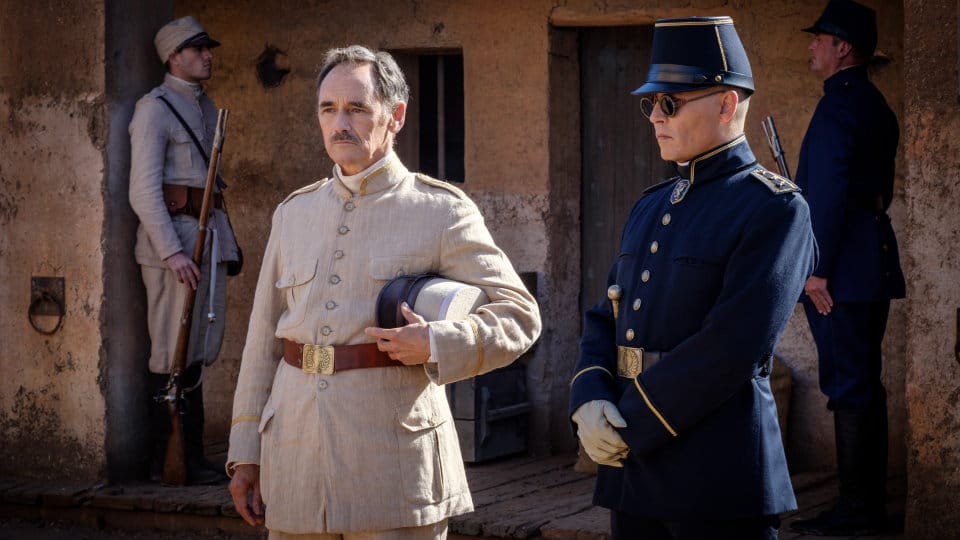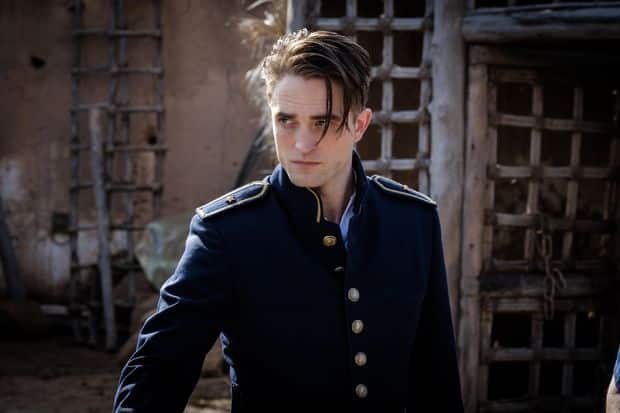Read also:
How to Watch FX Live Without CableHow To Watch AMC Without CableHow to Watch ABC Without CableHow to Watch Paramount Network Without CableCiro Guerra’s adaptation of the J.M. Coetzee novel tries to critique the aesthetics of imperialism but falls short.
Based on the 1980 novel of the same name, Waiting for the Barbarians follows an unnamed imperial magistrate (Mark Rylance) as he becomes increasingly disillusioned with the similarly-unnamed empire he serves. This disillusionment begins when Colonel Joll (Johnny Depp) enters his frontier town under the orders of the empire and begins to antagonise the eponymous “barbarians” (whom I’ll now be referring to as Indigenous people), especially one young woman with whom he becomes particularly close.
All of this falls against the backdrop of an empire gearing up for war with them to push them further away from the empire’s settlements. As Barbarians continues, though, it becomes increasingly clear that while there was an opportunity here to deconstruct empire and its acts of violence, director Ciro Guerra and screenwriter J.M. Coetzee (adapting his novel) are never willing to commit to their critiques – falling instead into many of the tropes which marginalise Indigenous people around the globe.
The best way to describe our audience perspective character, Rylance’s Magistrate, is as the archetypal nice coloniser. He’s a kind-hearted, warm older man who resolves the disputes in his frontier town with common sense rather than using the full force of the law. He wears relevant local garbs rather than military uniforms. He’s enlightened enough to see the eponymous “barbarians” as human beings, even deigning to learn some of their language.
This image is hammered home by Rylance’s doddering performance and some ham-fisted Jesus parallels, which really try to make you sympathetic towards him, but instead feels overplayed. At points, it feels like Rylance read the script for the first time right before the camera rolled, making for a very ineffectual performance. There are only a few points where he gets the chance to break out of that mode, but they largely come towards the end.

In spite of the desperate efforts of Rylance, the camera and the script, The Magistrate still doesn’t work as someone you can really get behind. For the Magistrate to be a hero, or even a flawed hero, you have to buy Guerra and Coetzee’s thesis that soft colonialism is an overall moral good. In fact, he directly voices the case for this: “With a nudge here and a touch there, I kept the world on its course.”
This paternalistic spiel is the same deeply disingenuous premise under which Europeans went to ‘civilise’ other continents, by erasing their cultures of ‘savagery and barbarity’ and instead installing the European flavour of barbarity instead. Also, this thesis of soft colonialism which Barbarians supports also flattens the substantial power differential between The Magistrate and anyone else he encounters. It ignores the fact that no matter how nice he is, as an agent of empire there is always the potential for him to weaponise that brutal and overwhelming threat. There’s a better version of this film which actually challenges the entire structure of empire and his complicity in it, but that isn’t the version we get.
Rylance’s Magistrate is juxtaposed against the military force which is under direct control of the Empire (as opposed to those permanently stationed in territories controlled by their local magistrate). Much like everything else in the film, they are very on the nose. These soldiers are dressed in slick navy-blue uniforms, with Depp even having a cape, it’s all very clearly evoking fascist aesthetics.
Our focal points for the military’s perspective are Depp’s Colonel Joll, who leads the group who enters this settlement, and Officer Mandel (Robert Pattinson), Joll’s right-hand man. Depp’s attempt at a serious performance in this film is inscrutable, much like his bizarre and unexplained vaguely German accent. He’s going for a quiet menace but it never lands. Instead, you just end up with shots of him giving vague looks with a forced, stiff expression, as he defends his use of brutal torture by monologuing about how “pain is truth.”

By contrast, Pattinson gives what is easily the film’s best performance. Random English accent aside, he does a fantastic job of playing a scummy and kind of pathetic fascist. His performance gives Mandel the feeling of a small man who’s high on power and violence, but incredibly hollow without that power. Every moment he’s on screen, you despise him more and more. Even though Joll is clearly the more morally despicable one of the pair, Depp’s performance really can’t sell it, and Pattinson really shows him up.
More holistically, the film fails to bring out the reality that the difference between these torturers and Mandel is one of method rather than one of deep philosophy or impact. It also fails to recognise the way these two methodologies are co-dependent — two sides of the same colonising coin. Instead, Coetzee insists that we should be siding with Rylance’s methods because he’s nice to the people whose lands he encroaches on under the banner of a genocidal empire.
Even with its other flaws, the representation of the Indigenous people in the film is its biggest failure. They’re basically an amalgam of white perceptions of Indigenous peoples: there are some very clear inspirations from the cultural perception of Native Americans, with repeated references to a “frontier”, movements of an Empire which mirror the Westward Expansion of the USA, and there’s even a scalping for good measure. There’s also a riff on the idea of a Mongol Horde, and there’s also a vaguely Arab sensibility to the region.
The Indigenous population is largely represented by an unnamed girl (Gana Bayarsaikhan) whose age is never entirely clear. She’s left severely injured by an interrogation from Joll’s soldiers, and The Magistrate nurses her back to health. The age gap between Bayarsaikhan and Rylance is never really made clear, which makes their dynamic all the more confusing. It’s hard to tell whether he’s a father figure, friend, or love interest for her, and Coetzee never lets her voice her own desires.
The representation of the Indigenous people in the film is its biggest failure.
She very much feels like the trope of the “Indian Maiden” — a nearly-mute vessel onto which The Magistrate can project his guilt — so her performance is heavily constrained by that. There are a few points where they flirt with a meaningful critique of the white saviour, but they pull away every time.
The crux of the issue is that no matter how much the dialogue of the film insists on the humanity of the so-called barbarians, the film formally does not recognise them as human. The most obvious display of this problem is that none of the Indigenous people have names, Bayarsaikhan’s character only ever being referred to as The Girl. The same goes for the Indigenous people; we’re never given a name for them, apart from the heavily loaded term of “barbarians”.
You could say that with a lead who’s just called The Magistrate and an empire that’s never named, the point is moot. But there’s a material difference here: when the hegemony is nameless, it’s an empowered choice; when the subaltern is nameless, it’s an oppressive act of othering. Defining your own name is an act of declaring your humanity, and they never get that. They also have no defined culture beyond vague conflated aesthetics and (outside of The Girl) they mostly exist on screen to be brutalised or threaten brutality themselves. While the text implies otherwise, the framing positions them more like beasts to be pitied than humans to sympathise with.
Waiting for the Barbarians feels like it hasn’t moved on from the day it was published in 1980. From its vague aesthetics, to its dehumanising of Indigenous people, this film might have seemed nuanced and progressive to (non-Indigenous) people a few decades ago. But Hollywood has moved on from this kind of film – and for good reason. Even within the frame of its own outdated nature, there isn’t really much to cling onto, barring a few pretty shots that don’t serve much of a purpose, and Pattinson’s performance. Instead of being a grand meditation on the ethics of colonialism, Waiting for the Barbarians ends up confused, dull and woefully shallow.
Waiting for the Barbarians is currently available on digital and VOD.